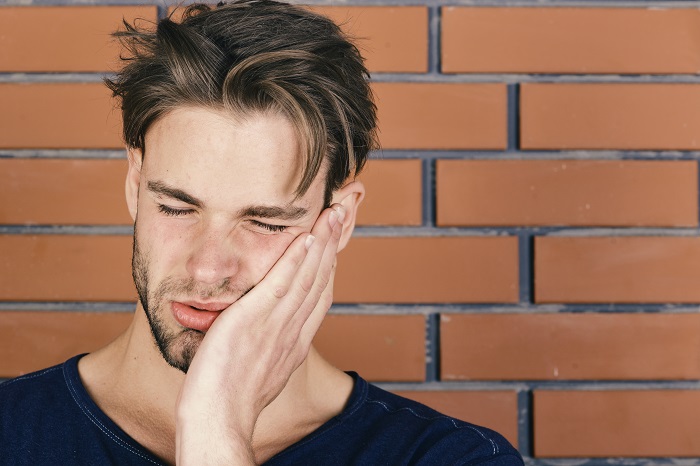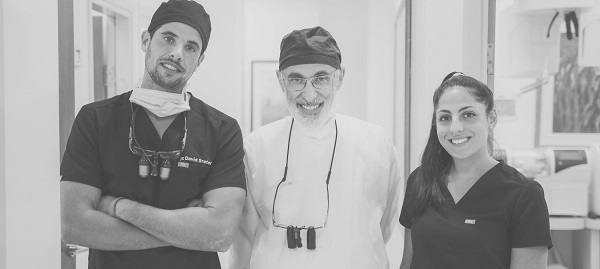
Treatment of Dental Diseases
- Canker Sores
- Canker Sores and Cold Sores
- Detecting oral cancer early
- Diabetes and Oral Health
- Oral care for Cancer Patients
- Preventing periodontal disease
- What is Gum Disease?
Share This Page
Mouth sores can be painful, annoying and unsightly. Some appear inside the mouth - on the gums, tongue, lips, cheeks or palate (roof of the mouth). Others can appear outside the mouth, such as on and around the lips, under the nose and on the chin.
Here are the descriptions of two common types of mouth sores, commonly known as canker sores and cold sores.
Canker Sores
Canker sores appear inside the mouth. They usually are small ulcers with a white, yellow or gray center and a flat red border. Rarely, canker sores can be very large with a raised border. There may be one or several ulcers, and they often recur at varying periods.
A canker sore usually begins as a red spot or bump. It may produce a tingling or burning sensation before other symptoms appear. Canker sores are painful. Fortunately, most canker sores heal spontaneously in seven to ten days. If the sore is present longer than two weeks, see your dentist.
The exact cause of canker sores is not known. Genetics plays a role. White blood cells in our immune system may affect the lining of the mouth, causing these irritating, but harmless, sores. Fatigue, emotional stress and certain foods can increase the possibility of a canker sore for some people. Even biting the inside of the cheek or tongue or chewing a sharp piece of food may trigger a canker sore.
Canker sores are not contagious or precancerous. There is no permanent cure for canker sores; therefore, treatment is for discomfort or pain. Over the counter topical medications (such as numbing agents or protective ointments) and antimicrobial (germ fighting) mouthrinses may offer temporary relief. Avoid hot, spicy or acidic foods and beverages that can irritate the sore. Specific treatment for an attack involves corticosteroids (prednisone-like medications), in either topical or systemic (tablet or capsule) form, that control the troublesome lymphocytes.
Cold Sores
Cold sores are groups of painful, fluid-filled blisters(often called "fever blisters"). These unsightly sores usually erupt on the lips, and sometimes on skin around the lips. Clusters of small blisters also may occur on the gum tissue near the teeth and/or on the bony roof of the mouth.
Cold sores are caused by herpes virus Type 1 or Type 2 and are contagious. The initial infection (primary herpes), which often occurs before adulthood, may be confused with a cold or the flu. The infection can cause painful lesions to erupt throughout the mouth, and some patients can be quite ill for a week. Most people who become infected with herpes do not get sick.
Once a person is infected with herpes, the virus stays in the body, where it may remain inactive. Unfortunately, in some people, the virus becomes activated periodically, causing the cold sore to appear on the lips or other sites. A variety of irritants -wind, sun, fever, stress- can cause a flare.
Cold sores usually heal in about a week. Once the blister breaks, an unsightly scab forms. Over the counter topical anesthetics and protectants or anti-inflammatory agents or topical antiviral agents may provide temporary relief for the discomfort, but they do little to speed healing. As with the common cold, there is no cure for these viral infections. Topical or systemic antiviral drugs can be prescribed by your dentist, but they are ineffective after three to four days of blister formation and usually are not recommended in otherwise healthy patients.
See A Change? See Your Dentist
Not all sores are harmless. Schedule an appointment if you notice any change in your mouth, including pain or discomfort, or the presence of sores in the mouth, even if they are not painful. A biopsy usually can determine the cause or rule out another disease. Your dentist can recognize and often diagnose the type of mouth sore or spot on the basis of its appearance and location.
Here are the descriptions of two common types of mouth sores, commonly known as canker sores and cold sores.
Canker Sores
Canker sores appear inside the mouth. They usually are small ulcers with a white, yellow or gray center and a flat red border. Rarely, canker sores can be very large with a raised border. There may be one or several ulcers, and they often recur at varying periods.
A canker sore usually begins as a red spot or bump. It may produce a tingling or burning sensation before other symptoms appear. Canker sores are painful. Fortunately, most canker sores heal spontaneously in seven to ten days. If the sore is present longer than two weeks, see your dentist.
The exact cause of canker sores is not known. Genetics plays a role. White blood cells in our immune system may affect the lining of the mouth, causing these irritating, but harmless, sores. Fatigue, emotional stress and certain foods can increase the possibility of a canker sore for some people. Even biting the inside of the cheek or tongue or chewing a sharp piece of food may trigger a canker sore.
Canker sores are not contagious or precancerous. There is no permanent cure for canker sores; therefore, treatment is for discomfort or pain. Over the counter topical medications (such as numbing agents or protective ointments) and antimicrobial (germ fighting) mouthrinses may offer temporary relief. Avoid hot, spicy or acidic foods and beverages that can irritate the sore. Specific treatment for an attack involves corticosteroids (prednisone-like medications), in either topical or systemic (tablet or capsule) form, that control the troublesome lymphocytes.
Cold Sores
Cold sores are groups of painful, fluid-filled blisters(often called "fever blisters"). These unsightly sores usually erupt on the lips, and sometimes on skin around the lips. Clusters of small blisters also may occur on the gum tissue near the teeth and/or on the bony roof of the mouth.
Cold sores are caused by herpes virus Type 1 or Type 2 and are contagious. The initial infection (primary herpes), which often occurs before adulthood, may be confused with a cold or the flu. The infection can cause painful lesions to erupt throughout the mouth, and some patients can be quite ill for a week. Most people who become infected with herpes do not get sick.
Once a person is infected with herpes, the virus stays in the body, where it may remain inactive. Unfortunately, in some people, the virus becomes activated periodically, causing the cold sore to appear on the lips or other sites. A variety of irritants -wind, sun, fever, stress- can cause a flare.
Cold sores usually heal in about a week. Once the blister breaks, an unsightly scab forms. Over the counter topical anesthetics and protectants or anti-inflammatory agents or topical antiviral agents may provide temporary relief for the discomfort, but they do little to speed healing. As with the common cold, there is no cure for these viral infections. Topical or systemic antiviral drugs can be prescribed by your dentist, but they are ineffective after three to four days of blister formation and usually are not recommended in otherwise healthy patients.
See A Change? See Your Dentist
Not all sores are harmless. Schedule an appointment if you notice any change in your mouth, including pain or discomfort, or the presence of sores in the mouth, even if they are not painful. A biopsy usually can determine the cause or rule out another disease. Your dentist can recognize and often diagnose the type of mouth sore or spot on the basis of its appearance and location.


